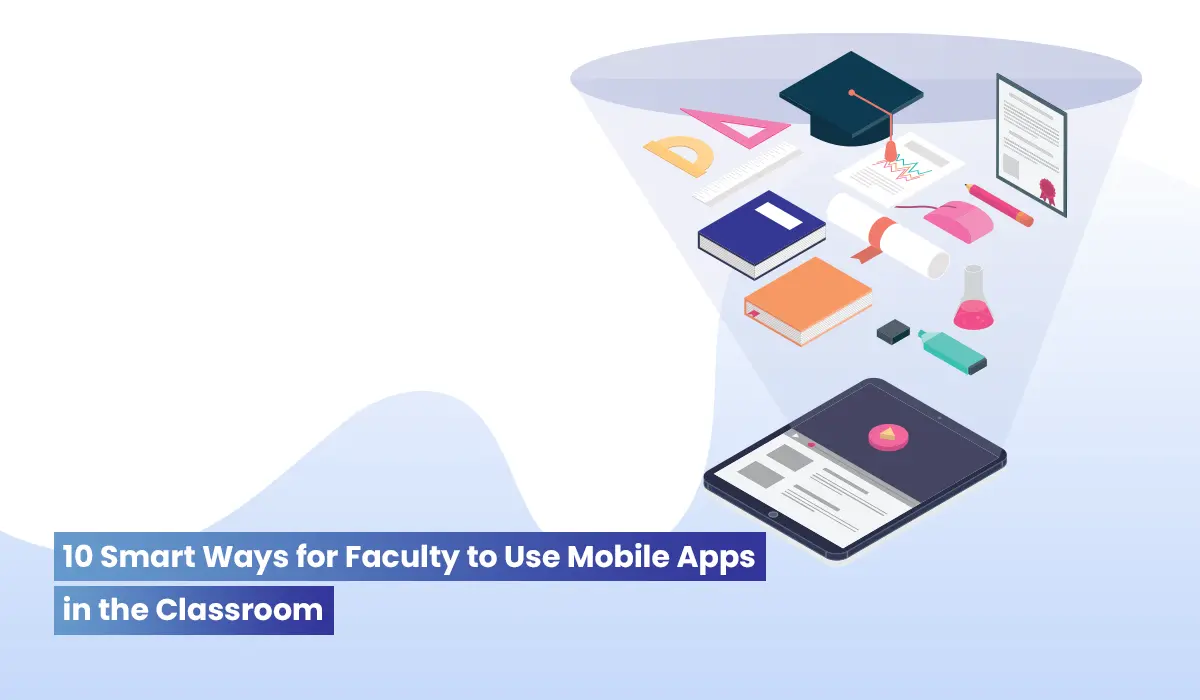10 Smart Ways for Faculty to Use Mobile Apps for Higher Education in the Classroom
General
Faculty may not have an aide. Mobile technology can be a great tool to support instruction. It helps instructors to mark attendance, create assignments, assign grades, track discipline, upload multimedia, generate reports, send notifications, store lessons and interact with students via chat, discussion forums and social media.
Mobile app for faculty is the next big thing. Educators can use the mobile app to communicate and collaborate with students in real-time to save time and optimize resources. Integrating technology with education is a great way to innovate pedagogy and enhance the learning experience of students. Here are the ten great ways in which we feel the faculty can make the most of mobile apps in classrooms.
1. Manage Assessments
There is another way to go paperless with student assignments. Faculty can easily create, edit and upload assignments and check real-time status updates.
2. Assign Grades
Faculty can review the submitted assignments and assign grades with comments to share the results via email and SMS alerts. This will make students and parents happy with the learning curve.
3. Course Evaluation
Teachers can use the mobile app to create interactive quizzes, surveys, and polls for the students to answer questions on the fly. Capture student evaluations on courses with custom forms and receive feedback to analyze the quality of learning.
4. Take Attendance
Check off who’s in the classroom within seconds. There is a great way for teachers to take attendance each day and automatically calculate the absenteeism and tardiness of students. List out your students and the app takes care of the rest. Keep parents informed of student absences via push notifications.
5. Upload Multimedia
Even better than the whiteboard faculty can use mobile apps to upload video lessons to replay later on websites or mobile devices. This will make the lectures more interactive and teachers can listen to their lectures and can improve them if needed.
6. Track Discipline
The mobile app does it all! Track student discipline and behavior incidents in the classroom with searchable profile information on each student. It’s easy to generate notifications and contact parents via one-touch email notifications and SMS alerts about what’s going on with each student in the classroom.
7. File Sharing
Faculty who don’t want to use a desktop or laptop can still share their files, documents, and presentations with students using the mobile app. It’ll even sync files, online or offline, to enable students and instructors to access files, no matter what kind of electronic documents. The mobile app allows you to store all files with Dropbox or Google Drive.
8. Notifications
Educators can send instant notifications and alerts on attendance, grades, timetable, discipline, and class events to students to make it very powerful. They can share quick animated messages with other instructors.
9. Discussion Forum & Chat
The threaded discussion and chat are enough for faculty to provide the best help, tips and share advice with other instructors on mobile phones.
10. Social Sharing
The powerful features of social networks are consolidated in a single mobile solution to improve collaborative learning. Using the mobile app, faculty can share the course assignments, videos, and podcasts with students on social networks such as Facebook, Twitter, and YouTube.
Want to contribute?
We welcome thought leaders to share ideas and write for our blog.
Become a Guest Author →
